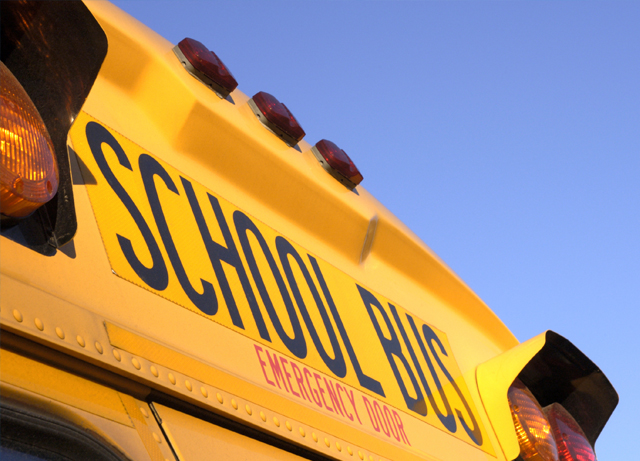By: Christine Koester, Office of Transportation and Air Quality, U.S. Environmental Protection Agency
It is a common scene across the country – before the final bell rings to mark the end of the school day, parents in their cars form a line near the school doors, trace the parking lot perimeter, and snake into the street. Oftentimes, drivers idle their cars as they listen to the radio or keep the heater or A/C running. Even after the students are buckled in, congestion prevents the drivers from making a quick getaway. No one benefits in this situation— traffic inconveniences parents and other local drivers, idling cars release greenhouse gases (GHG) and other pollutants into the air, and pedestrians must deal with additional cars.
Walking and biking is an environmentally-friendly and healthy way to get to school, but not all students live close enough or in neighborhoods with appropriate infrastructure to do so safely. The U.S. Environmental Protection Agency (EPA) offers a school siting tool for local leaders and school districts to place new schools in locations that encourage active transit methods to reduce emissions. But for students with a busy highway or intersection with no crosswalk standing between them and school, the school bus is a convenient, sustainable, and above all, safe way to travel to and from school.
More than 25 million American children ride on a school bus every day. Imagine traffic conditions if each of those children were driven separately to school. Many students, as well as parents and teachers, would be racking up tardies thanks to the congestion. Fortunately, school buses reduce the number of cars on the road and, as an added bonus, are considered a safer mode of transportation than passenger vehicles. The American School Bus Council highlights the school bus fleet’s safety record and notes that the bus is safer than getting a ride from a parent (and 50 times safer than riding with a teen driver).
Advances in school bus technology for diesel engines have made today’s buses more than 90% cleaner than ones from 1990. EPA implemented stricter emissions standards on new school buses in 2007. Since then, buses emit less particulate matter and nitrogen oxides. These pollutants can harm health, especially in vulnerable populations like children. Reducing these emissions prevents asthma attacks and lost school days. In addition, newer buses release less GHG such as carbon dioxide, which contributes to climate change. Many school districts still have buses that pre-date new emissions standards in their fleets, but clean diesel technologies are available to reduce pollutants from these buses as well. Fleet managers can choose from a variety of technologies to fit their needs, from devices that capture exhaust like diesel particulate filters or direct-fired heaters to limit idling in cold weather.
EPA has encouraged “fleet turnover,” that is, retrofitting or replacing all buses in a school’s fleet so they meet the highest emissions standards. EPA has partnered with school bus manufacturers, industry, and school officials to implement Clean School Bus USA, a national program to help reduce diesel emissions. The Diesel Emissions Reduction Act (DERA) provides funding to upgrade older diesel engines, including school buses. EPA has provided DERA funding to replace or retrofit approximately 25,000 school buses since 2008. EPA created a rebate program in 2012 to provide a streamlined application process for school districts to upgrade older buses. EPA has offered rebates to replace 550 school buses with new ones. The rebate program has proved popular with nearly 2,000 applicants in three funding rounds, so EPA plans to launch another rebate program for school bus funding in the fall. Be sure to check the Clean Diesel website for more information.
Clean School Bus USA also encourages idle reduction. Idling pollutes air in and around the bus, so even a new bus’s cabin can have elevated levels of diesel exhaust if it is parked next to an older, idling bus. Idling also wastes fuel and money, and contrary to popular belief, school bus engines do not need to idle for more than a few minutes to warm up. Idling is also a concern for cars waiting to pick-up students. Schools should implement idle reduction campaigns on their grounds to reach bus drivers and parents.
For students who cannot easily walk or bike to school, the school bus is far and away the smartest option for transit. It is convenient for parents hustling multiple people out the door each morning, and its safety record provides peace of mind. The bus also keeps cars off the road, helping with traffic and local air quality. EPA and school bus manufacturers have worked to improve engines to provide reductions in harmful pollutants and health benefits to the young students who ride them.
About the Author
Christine Koester works at the U.S. Environmental Protection Agency in the Office of Transportation and Air Quality and has managed the school bus rebate program for the past two years. She focuses on climate adaption for communities, specifically in encouraging sustainable transportation policies.

